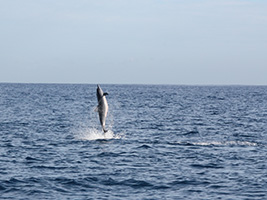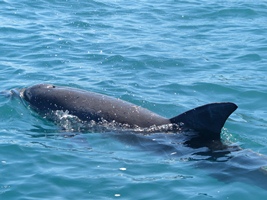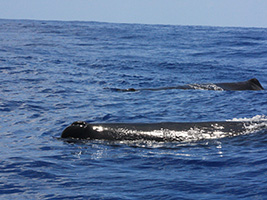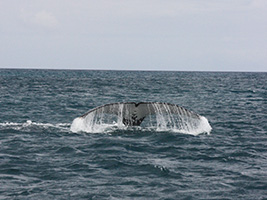Cetaceans
Dolphins and whales are collectively known as cetaceans, from the Greek word 'ketos', translating to sea monster. Cetaceans (like humans) are mammals, meaning that they are warm-blooded, breathe air, give birth to live young and nurse their calves with milk. Currently, there are approximately 86 species worldwide. Here are some of the most commonly seen species around Mauritius.


The sperm whale is certainly the most amazing predator of our
planet. Weighing up to 50 tonnes and with a length ranging from 10
to 18 meters, the sperm whale is a giant among toothed whales. Once
persecuted until being virtually exterminated, the sperm whale is
now coming back from the edge.
It is easy to recognize the blow of sperm whale as it goes off at
an angle of approximately 45 ° to the left. The blow can be up to 5
meters high and is an explosion that can be heard within a 1 km
radius.
The sperm whale is however included on the IUCN Red List as
Vulnerable. This cetacean is found in all temperate and tropical
oceans.

The humpback whale is one of the most impressive marine mammals.
With a length of 12-16 meters and a weight between 25 and 33
tonnes, this baleen whale, also called humpback, is a true
end-to-train oceans. Very expressive, the humpback whale multiplies
melodious songs in the deep as well as the jumps out of the
water.
Close to extinction in the early 20th century, the humpback whale
is now the most studied and best known cetacean.
